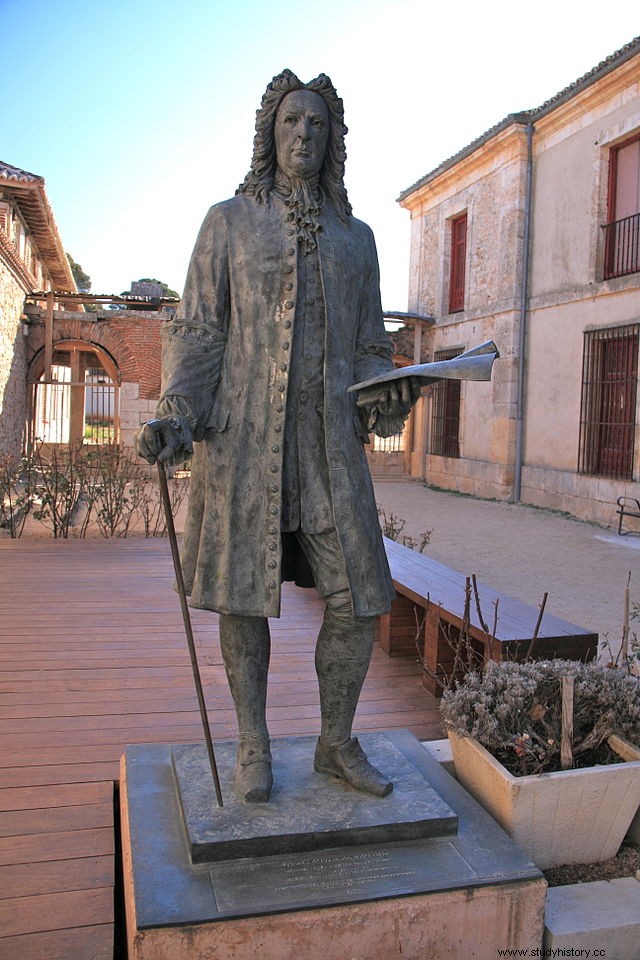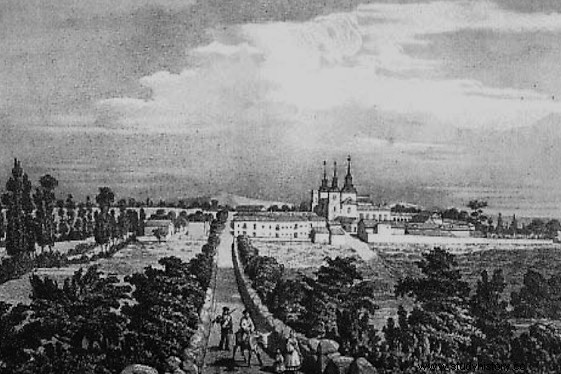The Industrial Revolution, or what is the same, the process of economic, social and technological transformation that began in the second half of the 17th century in Great Britain and allowed the transition from a rural economy based on agriculture and trade to a urban and mechanized, it did not officially arrive in Spain until the mid-19th century with the introduction of the Bonaplata steam engine in Barcelona.
However, a 17th-century Spanish visionary was very close to changing the course of our country's history with a pilot project that became the most advanced pre-industrial complex of its time in Europe:the New Baztán . Here was foreshadowed what the Industrial Revolution would have been in capital letters if it had taken place in Spain and not in other European countries.

Juan de Goyeneche y Gaston (1656-1735), banker, publisher, journalist and man of industry who became treasurer of Carlos II, settled in the Madrid town of Olmeda de las Cebollas (today Olmeda de las Fuentes ), during the War of Succession, a cloth factory to supply uniforms to the army. Admirer of the political-economic theories of Colbert (minister of the French King Louis XIV), Goyeneche devised an agricultural-industrial complex that he called Nuevo Baztán, 35 kilometers from Madrid, a beautiful urban complex that he commissioned from the famous architect Churriguera .
In Nuevo Baztán, Goyeneche worked on the idea of applying Colbertism to your own company. He intended to generate a production of sumptuary objects that could compete with the foreign market, reduce imports and thus clean up the battered Hispanic economy. Due to the good progress of Nuevo Baztán, Goyeneche had to expand the complex with new paper and glass factories, liquor factories, candle shops, confectionery, tanning, shoe shops, silk fabrics, ribbons, handkerchiefs and colognes. He even dared with a glass factory, a product considered a luxury.

However, the rapid exhaustion of such economic approaches, the cessation of tax exemptions and army supply contracts, put an end to the experiment, unique in Spain, causing the decline and abandonment of the small town and its nucleus. palatial.
Today remains the legacy of the place that was once glimpsed as the germ of Europe's mechanical industry. In the main square of Nuevo Baztán, the traveler can see the Goyeneche palace and the church, with a notable marble altarpiece and the tomb of the aforementioned under the dome, as well as various buildings that were once farms and model factories. In the current town there are consistent remains of those cloth, ammunition, hat and glass factories, as well as the workers' homes, all arranged in wide, straight and ventilated streets with advanced urban criteria.
There was even an apprenticeship seminar and a hostel for travelers. Today, apart from the eighteenth-century buildings of Goyeneche, the traveler can admire a considerable number of luxury and middling urbanizations that decongest Madrid and Alcalá de Henares on weekends and holidays.
Collaboration with Javier Ramos from Places with History.
Sources and images:Nuevo Baztán, Ayto. Nuevo Baztán
